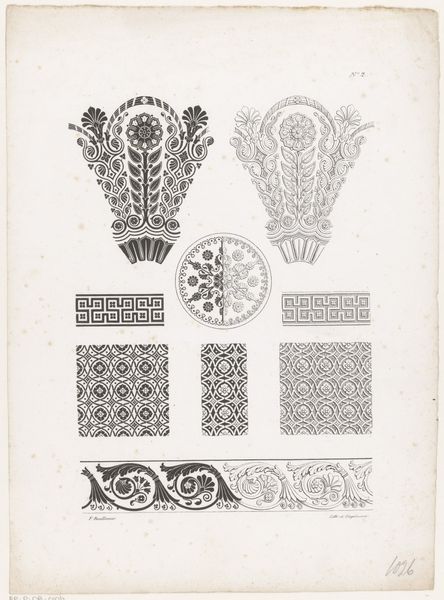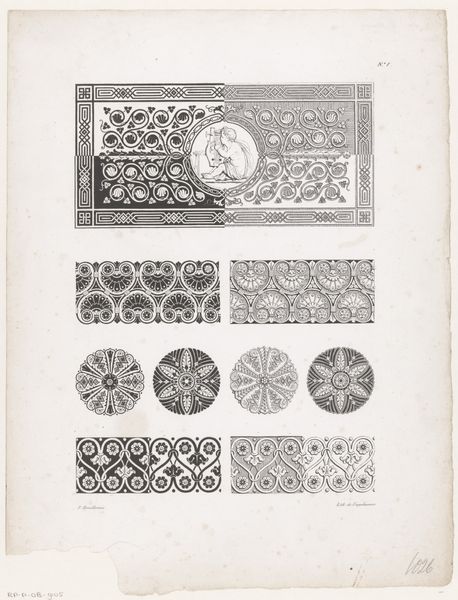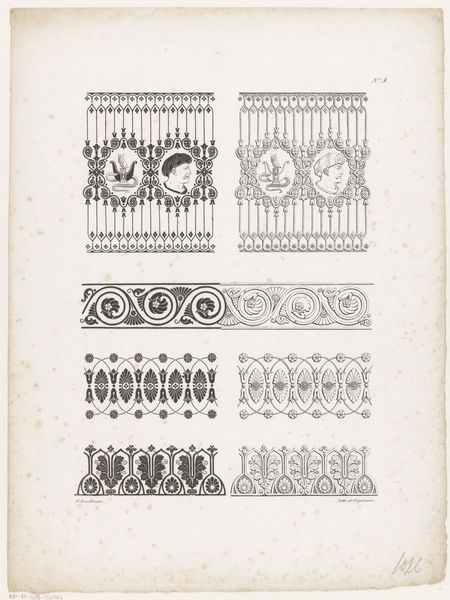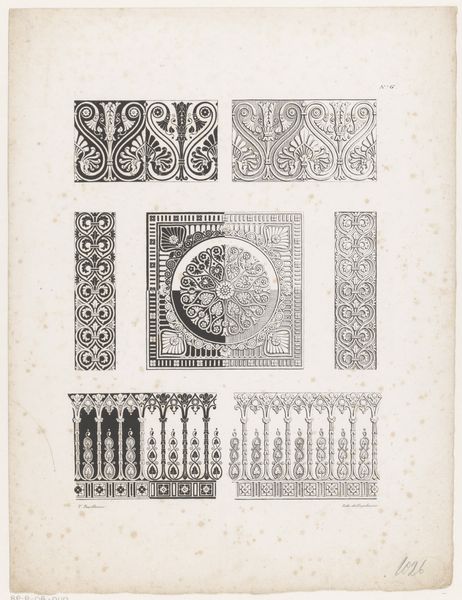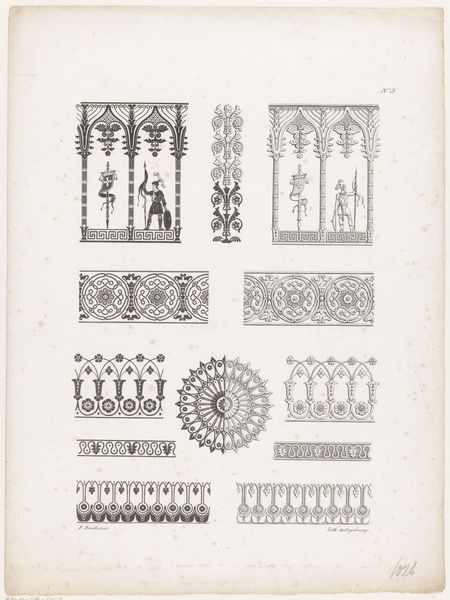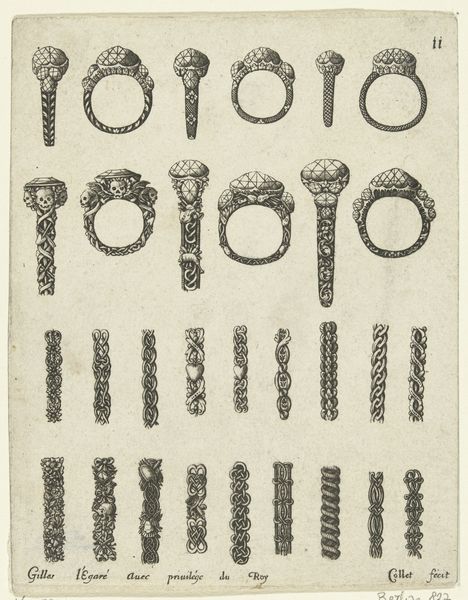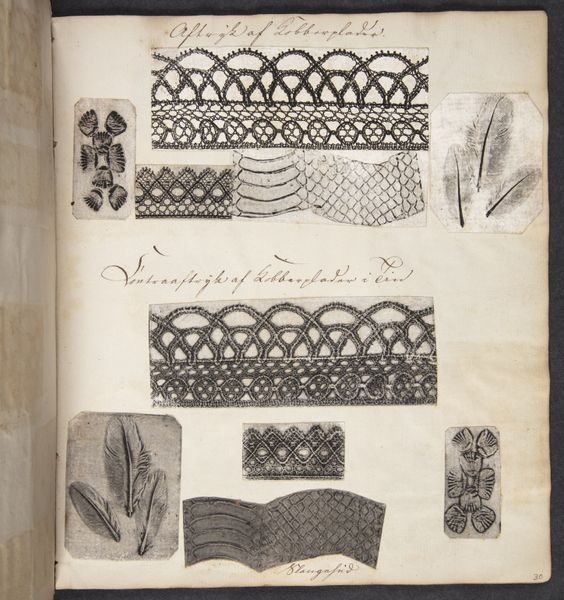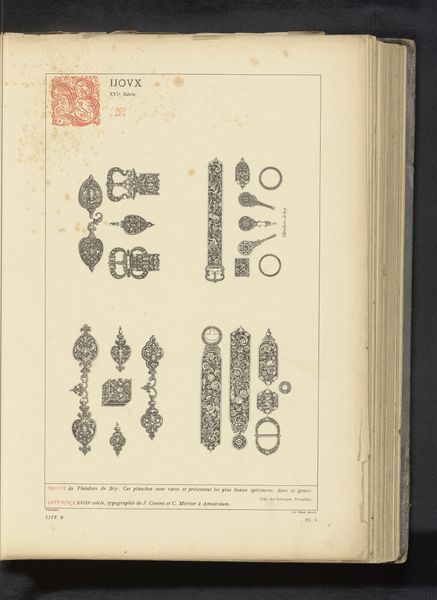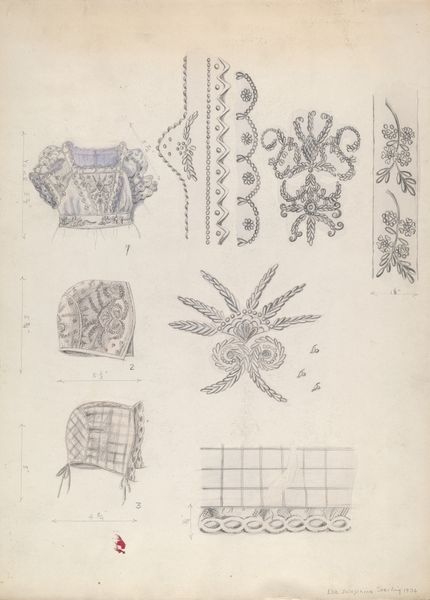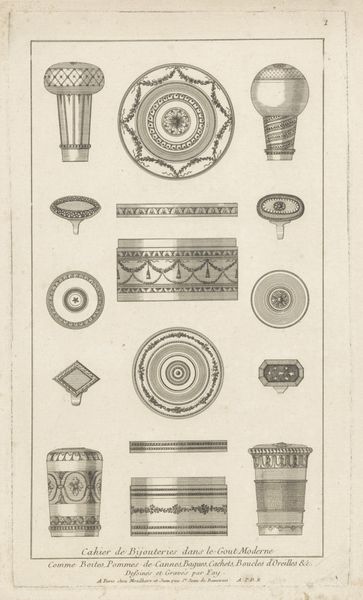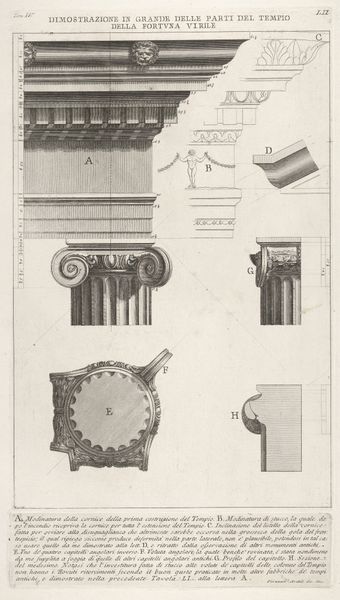
Dimensions: height 355 mm, width 268 mm
Copyright: Rijks Museum: Open Domain
Curator: Looking at this, I feel transported to an age of craft. What strikes me immediately is the intricate nature, everything is neatly placed, like elements in an architect's rendering of an ornate fountain. What are your initial impressions? Editor: What I see at first glance is geometry meeting romanticism. This lithograph, "Waaiervormige en vierkante ornamenten," which roughly translates to fan-shaped and square ornaments, by Gottfried Engelmann, really speaks to the moment decorative arts embraced industrial reproduction. It's from sometime between 1798 and 1839, a transitional period. Curator: I love that insight, particularly as each of the patterns seems so different, as if Engelmann wasn't sure if he was making tiles or… elaborate doilies. Editor: He might have been prototyping. Consider that the grid offers a structured way to think about ornament—like modules for wallpaper, friezes. Look at those fan shapes. They aren't just decoration. The fan as a symbol speaks to refinement, secrecy, and a kind of coded language through gesture, all extremely popular themes at the time. Curator: Very good point. There's something deeply romantic in that perceived “secrecy”, a hidden language. But I'm stuck on how repetitive these images are. You see them reflected ad infinitum in textile patterns. Doesn’t it speak against the romantic impulse that these images were supposed to embody at the time? Editor: Perhaps not. Repetition can have a sacred function, recalling meditative practices, or how certain images—say, floral motifs—can accrue meaning through continual use. In decorative arts, they created immersive, patterned environments, shaping emotional responses, as well. Consider also how these shapes create a bridge. The ornaments feel both static and like they are flowing through time, rooted in symbolism. Curator: Okay, I give you that; it's romanticism streamlined for industrial purposes. And that blend of new technologies and ancient artistic principles is what makes Engelmann's ornament designs truly stand out. Thanks to Engelmann, artisans of the time were probably more at ease. Editor: Exactly. What remains timeless is the impulse to adorn our spaces and selves with layers of symbolic and emotional resonance. Even a lithograph like this can be a cultural touchstone.
Comments
No comments
Be the first to comment and join the conversation on the ultimate creative platform.
